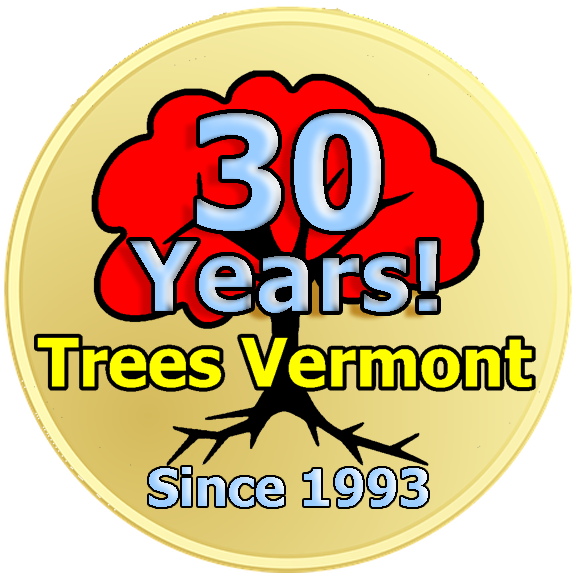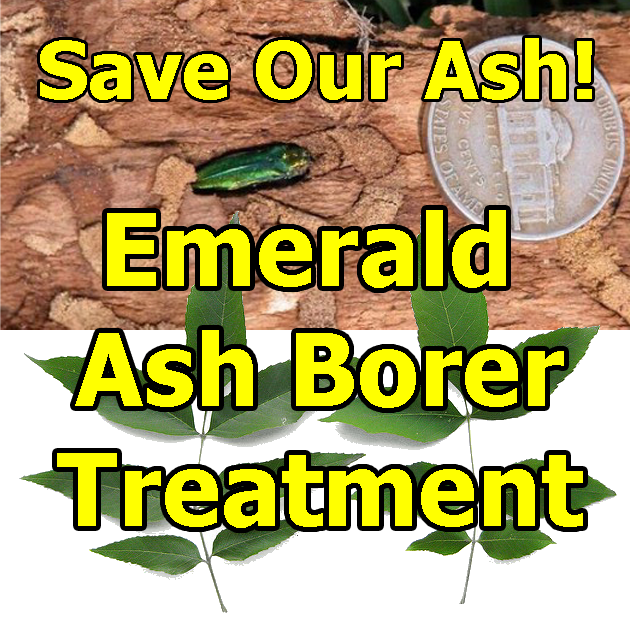Recognizing Hazardous Tree Defects
Recognize Hazardous
Defects in Trees


How To Recognize Hazardous Tree Defects Pub# NA-FR-01-96
Table of Contents
- Introduction
- Inspecting Trees
- What to Look For
- Multiple Defects
- Corrective Actions
- Move the Target
- Prune the Tree
- Remove the Tree
- Cabling and Bracing
- Topping and Tipping--Poor Pruning Practices
- Conclusions
- Suggested Reading
- The Authors
Introduction
Trees add to our enjoyment of outdoor experiences whether in forests, parks, or urban landscapes. Too often, we are unaware of the risks associated with defective trees, which can cause personal injury and property damage.
Interest in hazard tree management has increased in recent years due to safety and liability concerns resulting from preventable accidents. Recognizing hazardous trees and taking proper corrective actions can protect property and save lives.
A "hazard tree" is a tree with structural defects likely to cause failure of all or part of the tree, which could strike a "target." A target can be a vehicle, building, or a place where people gather such as a park bench, picnic table, street, or backyard.
This information is presented to help home owners and land managers in recognizing hazardous defects in trees and to suggest possible corrective actions. We recommend that corrective actions be undertaken by professional arborists.
Because of the natural variability of trees, the severity of their defects, and the different sites upon which they grow, evaluating trees for hazardous defects can be a complex process. This web page and website present guidelines, not absolute rules for recognizing and correcting hazardous defects.
The content of this web page was provided through the USDA National Forest Service and has been edited for format and readability. The opinions expressed in this website do not necessarily reflect the opinions or Trees Vermont, the webmaster or employees of Trees Vermont and belong solely the original authors of this content.
Trees are complex and unpredictable living things. No tree is inherently safe and no tree can be made "SAFE” or be prevented from failing. The natural life cycle of a tree dictates that it will fail, either in part or in whole, and any such failure can result in catastrophic damage to property or injury, including death, to persons.
It is impossible to accurately predict the remaining lifespan of any tree or when it will fail.
Nothing on this web page or in this website shall be used or construed as to declare or determine any tree to be safe. ALL TREES CAN AND WILL FAIL, OFTEN WITH CATASTROPHIC, EVEN DEADLY RESULTS! The only way a tree can be made safe is to have it professionally removed.
Inspecting Trees
As the owner of trees it is your responsibility to inspect them every year. Tree inspections can be done at any time of year, leaf-on or leaf-off. To be thorough, inspect trees after leaf drop in fall, after leaf-out in spring, and routinely after severe storms.
Inspect trees carefully and systematically. Start at the bottom and examine all parts of the tree beginning with the ground around the tree. Inspect the roots, root or trunk flare, main stem, branches, and branch unions. Be sure to examine all sides of the tree. Use a pair of binoculars to see branches high off the ground.
Consider the following factors when inspecting trees:
Tree Condition: Trees in poor condition may have many dead twigs, dead branches, or small, off-color leaves. Trees in good condition will have full crowns, vigorous branches, and healthy, full-sized leaves; however, green foliage in the crown does not ensure that a tree is safe. Tree trunks and branches can be quite defective and still support a lush green crown.
Tree Species: Certain tree species are prone to specific types of defects. For example, some species of maple and ash in the Northeast often form weak branch unions (page 5 ), and aspen is prone to breakage at a young age (50-70 years) due to a variety of factors, including decay and cankers.
Tree Age and Size: Trees are living organisms subject to constant stress. Pay particular attention to older trees, which may have accumulated multiple defects and extensive decay.
Remember that not all defects are visible from the ground. If you want a thorough inspection, or suspect something may be hidden, hire a qualified Arborist to check your trees. An Arborist with informed diagnostic skills such as an ISA Certified Arborist or a Registered Consulting Arborist (through the American Society of Consulting Arborists) are your best bet.
What to Look For
Hazardous defects are visible signs that the tree is failing. Seven main types of tree defects are universally recognized: deadwood, cracks, weak branch unions, decay, cankers, root problems, and poor tree architecture.
A tree with defects is not hazardous, however, unless some portion of it is within striking distance of a target.
If there is no target, the Tree is Not Hazardous!
Deadwood

Dead wood is one of those "not negotiable" items. Dead trees and larger dead branches must be removed immediately!
Dead trees and branches are unpredictable and can break and fall at any time.
Dead wood is often dry and brittle and cannot bend in the wind like a living tree or branch.
Dead branches and tree tops that are already broken off ("hangers" or "widow makers") are especially dangerous!
Take immediate action if...
- A broken branch or top is lodged in a tree.
- A tree is dead.
- A branch is dead and of sufficient size to cause injury. This will vary with height and size of branch. A small branch falling from on high can be just as deadly as a large branch falling only a few feet.
Cracks

A crack is a deep split through the bark, extending into the wood of the tree. Some cracks are internal and don't readily show through the bark.
Cracks are considered extremely dangerous because they indicate that that part of the tree has already failed albeit not yet catastrophic.
Take action if...
- A crack extends deeply into, or completely through the stem.
- Two or more cracks occur in the same general area of the stem.
- A crack is in contact with another defect.
- A branch of sufficient size to cause injury is cracked.
Weak Branch Unions

Weak branch unions are places where branches are not solidly attached to the tree.
A weak union occurs when two or more similarly-sized, usually upright branches grow so closely together that bark grows between the branches, inside the union.
This ingrown bark does not have the structural strength of wood, and the union is much weaker than one that does not have included bark (Fig. 3). The included bark may also act as a wedge and force the branch union to split apart.
Trees with a tendency to form upright branches, such as elm and maple, often produce weak branch unions
Weak branch unions also form after a tree or branch is tipped or topped, i.e., when the main stem or a large branch is cut at a right angle to the direction of growth leaving a large branch stub. The stub inevitably decays, providing very poor support for new branches ("epicormic" branches) that usually develop along the cut branch.
Take action if...
- A weak branch union occurs on the main stem.
- A weak branch union is cracked.
- A weak branch union is associated with a crack, cavity, or other defect.
Figure 3.This weak branch union has failed, creating a highly hazardous situation
Decay

Decaying trees can be prone to failure, but the presence of decay, by itself, does not indicate that the tree is hazardous. Advanced decay, i.e., wood that is soft, punky, or crumbly, or a cavity where the wood is missing can create a serious hazard (cover photo). .
Evidence of fungal activity including mushrooms, conks, and brackets growing on root flares, stems, or branches are indicators of advanced decay.
A tree usually decays from the inside out, eventually forming a cavity, but sound wood is also added to the outside of the tree as it grows. Trees with sound outer wood shells may be relatively safe, but this depends upon the ratio of sound to decayed wood, and other defects that might be present. Evaluating the safety of a decaying tree is usually best left to trained arborists (Fig. 4).
Take action if...
- Advanced decay is associated with cracks, weak branch unions, or other defects.
- A branch of sufficient size to cause injury is decayed.
- The thickness of sound wood is less than 1" for every 6" of diameter at any point on the stem.
Cankers

A canker is a localized area on the stem or branch of a tree, where the bark is sunken or missing. Cankers are caused by wounding or disease. The presence of a canker increases the chance of the stem breaking near the canker (Fig. 5). .
A tree with a canker that encompasses more than half of the tree's circumference may be hazardous even if exposed wood appears sound.
- Take action if...
- A canker or multiple cankers affect more than half of the tree's circumference.
- A canker is physically connected to a crack, weak branch union, a cavity, or other defect.
Root Problems


Trees with root problems may blow over in wind storms. They may even fall without warning in summer when burdened with the weight of the tree's leaves. There are many kinds of root problems to consider, e.g., severing or paving-over roots, raising or lowering the soil grade near the tree; parking or driving vehicles over the roots; or extensive root decay.
Soil mounding, twig dieback, dead wood in the crown, and off-color or smaller than normal leaves are symptoms often associated with root problems. Because most defective roots are underground and out of sight, above ground symptoms may serve as the best warning.
Take action if...
- A tree is leaning with recent root exposure, soil movement, or soil mounding near the base of the tree.
- More than half of the roots under the tree's crown have been cut or crushed. These trees are dangerous because they do not have adequate structural support from the root system.
- Advanced decay is present in the root flares or "buttress" roots.
Poor Tree Architecture

Poor architecture is a growth pattern that indicates weakness or structural imbalance. Trees with strange shapes are interesting to look at, but may be structurally defective. Poor architecture often arises after many years of damage from storms, unusual growing conditions, improper pruning, topping, and other damage.
A leaning tree may be a hazard. Because not all leaning trees are dangerous, any leaning tree of concern should be examined by a professional arborist.
Take action if...
- A tree leans excessively.
- A large branch is out of proportion with the rest of the crown.
Multiple Defects
The recognition of multiple defects in a tree is critical when evaluating the tree's potential to fail. Multiple defects that are touching or are close to one another should be carefully examined. If more than one defect occurs on the tree's main stem, you should assume that the tree is extremely hazardous.
Corrective Actions
Corrective actions begin with a thorough evaluation. If a hazardous situation exists, there are three recommended options for correcting the problem: move the target, prune the tree, or remove the tree.
Move the Target
Removing the target is often an inexpensive and effective treatment for correcting a hazard tree. Easily moved items like play sets and swings, RV's, and picnic tables can be placed out of the reach of the hazardous tree with little effort and expense.
If the target cannot be moved and a serious hazard exists, consider blocking access to the target area until the hazard can be properly eliminated.
Prune the Tree
A hazardous situation may be caused by a defective branch or branches, even though the rest of the tree is sound. In this case, pruning the branch solves the problem.
Prune when...
- A branch is dead.
- A branch of sufficient size to cause injury is cracked or decayed.
- A weak branch union exists and one of the branches can be removed.
- Branches form a sharp angle, twist, or bend.
- A branch is lopsided or unbalanced with respect to the rest of the tree.
- A broken branch is lodged in the crown. Remove the branch and prune the stub.
Pruning a tree properly early in its life is a good way to effectively avoid many potential problems when the tree is older and larger. When done correctly, routine pruning of trees does not promote future defects. If done improperly, immediate problems may be removed, but cracks, decay, cankers, or poor architecture will be the ultimate result, creating future hazards.
We recommend that the "natural target" pruning method be used. This pruning method is fully described in How to Prune Trees (Bedker, O'Brien & Mielke, 1995).
Remove the Tree
Before cutting a tree down, carefully consider the alternatives. The effects of removing a tree are often pronounced in landscape situations and may result in reduced property values. Tree removal should be considered as the final option and used only when the other two corrective actions will not work. Tree removal is inherently dangerous and is even more serious when homes and other targets are involved. Removal of hazardous trees is usually a job for a professional arborist.
Cabling and Bracing
Cabling and bracing does not repair a hazard tree, but when done correctly by a trained arborist, it can extend the time before a tree or its parts fail. It can also provide a means to "pre-rig" susceptible limbs to provide some control when they do fail.
Done incorrectly, cabling or bracing creates a more serious hazard.
While cabling and bracing are often times very appropriate for non-hazard trees, we do not recommend cabling or bracing as treatment for a hazard tree unless the tree has significant historic or landscape value.
Topping and Tipping--Poor Pruning Practices
Topping is the practice of pruning large upright branches at right angles to the direction of growth, sometimes used to reduce the height of the crown. Tipping is the cutting of lateral branches at right angles to the direction of growth to reduce crown width. Both of these practices are harmful and should never be used.
The inevitable result of such pruning wounds is decay in the remaining stub, which then serves as a very poor support to any branches that subsequently form. Trees that are pruned in this manner are also misshapen and esthetically unappealing.
Conclusions
Evaluating and treating hazard trees is complicated, requiring a certain knowledge and expertise. This publication outlines some of the basic problems that may alert you to a hazardous situation. Never hesitate if you think a tree might be hazardous. If you are not sure, have it evaluated by a professional. Consult your phone book under "Arborists" or "Tree Service.".
Remember that trees do not live forever. Design and follow a landscape plan that includes a cycle of maintenance and replacement. This is the best way to preserve the health of our trees and ensure a safe and enjoyable outdoor experience.
Suggested Reading
Albers, J.; Hayes, E. 1993. How to detect, assess and correct hazard trees in recreational areas, revised edition. St. Paul, MN: Minnesota DNR. 63 p.
Bedker, P.J.; O'Brien, J.G.; Mielke, M.E. 1995. How to Prune Trees. NA-FR-01-95. Radnor, PA: USDA Forest Service, Northeastern Area State and Private Forestry. 30 pp. Also available on the Internet via FTP or the World Wide Web at: http://willow.ncfes.umn.edu.
Fazio, J. 1989. How to Hire an Arborist. Tree City USA Bulletin No. 6. Nebraska City, NE: National Arbor Day Foundation; 8 p.
Fazio, J. 1989. How to Recognize and Prevent Hazard Trees. Tree City USA Bulletin No. 15. Nebraska City, NE: National Arbor Day Foundation; 8 pp.
Robbins, K. 1986. How to Recognize and Reduce Tree Hazards in Recreation Sites. NA-FR-31. Radnor, PA: USDA Forest Service, Northeastern Area;. 28 p.
Shigo, A. L. 1986. A New Tree Biology. Durham, NH: Shigo and Trees, Associates; 595 p.
The Authors:
Minnesota DNR
- Jana Albers, Plant Pathologist, Grand Rapids, MN.
- Tom Eiber, Entomologist, St. Paul, MN.
- Ed Hayes, Plant Pathologist, Rochester, MN. USDA Forest Service
- Peter Bedker, Plant Pathologist, St. Paul, MN.
- Martin MacKenzie, Plant Pathologist, Morgantown, WV.
- Joseph O'Brien, Plant Pathologist, St. Paul, MN.
- Jill Pokorny, Plant Pathologist, St. Paul, MN.
- Mary Torsello, Plant Pathologist, Durham, NH.
Please cite this publication as follows:
Minnesota Department of Natural Resources, and USDA Forest Service. 1996. How to Recognize Hazardous Defects in Trees. USDA Forest Service NA-FR-01-96. 20 pp.
Minnesota DNR
Minnesota Department of Natural Resources 500 Lafayette Road St. Paul, MN 55155-4044
USDA Forest Service Northeastern Area State & Private Forestry
Headquarters Office USDA Forest Service Northeastern Area State and Private Forestry 5 Radnor Corporate Center, Suite 200 Radnor, PA 19087-4585
Durham Field Office USDA Forest Service Northeastern Area State and Private Forestry Louis C. Wyman Forest Sciences Laboratory P.O. Box 640 Durham, NH 03824-9799
Morgantown Field Office USDA Forest Service Northeastern Area State and Private Forestry 180 Canfield Street Morgantown, WV 26505-3101
St. Paul Field Office USDA Forest Service Northeastern Area State & Private Forestry 1992 Folwell Ave. St. Paul, MN 55108-1099

How to Recognize Hazardous Defects in Trees was written to help people identify potential problems with trees. Trees with serious defects can pose an extreme hazard and should be treated with caution. The best way to correct a hazardous tree is to hire a professional arborist. Information in this publication can help to identify trees that require attention.


